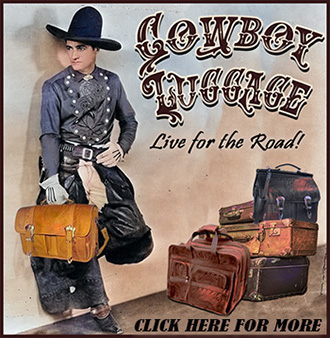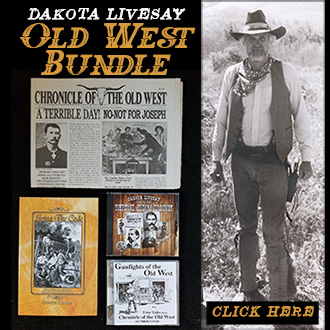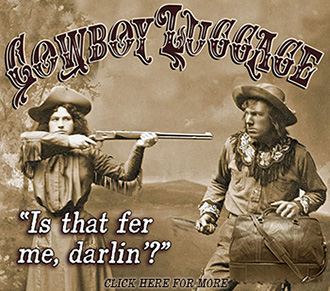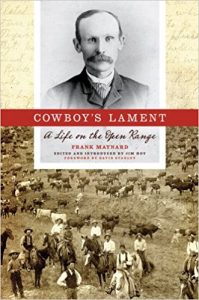 Cowboy’s Lament, A Life on the Open Range, Frank Maynard, Texas Tech University Press, www.ttuDress.org, $29.95, Cloth. Maps, Photos, Bibliography, Index. Foreword by David Stanley, professor emeritus of English, Westminster College, Salt Lake City.
Cowboy’s Lament, A Life on the Open Range, Frank Maynard, Texas Tech University Press, www.ttuDress.org, $29.95, Cloth. Maps, Photos, Bibliography, Index. Foreword by David Stanley, professor emeritus of English, Westminster College, Salt Lake City.
The Introduction to the book is a biography of the life and times of Frank Maynard, written by Jim Hoy, director of the Center for Great Plains Studies at Emporia State University in Kansas. The book is included in the “Voice in the American West” series, published by Texas Tech University Press.
This book is “dedicated to all the old-time cowboys whose stories didn’t get told.” It was written by a man who spent part of his early life riding the open range for a variety of cattle companies beginning in the 1870s when the great roundups were at their height. Maynard was a teenager when he left his happy home in Iowa and headed for Towanda, Kansas where he signed on with an outfit heading for Colorado.
For the next 15 years he experienced every exciting event in the life of a working cowboy that included rough horses, shooting scrapes, injuries, illness and uncertainty, plus wild and free comradery with his pals. What made Frank Maynard different is that he was a romantic who chronicled his experiences, writing stories and poetry about life as a cowboy. Meanwhile, he handled guns, broke horses had some narrow escapes dealing with disgruntled co-workers, cattle rustlers and Indians, but he always remained on the side of law and order. Maynard remained in touch with his family, having a close relationship with his parents and sisters.
In time he met a young lady named Flora Vienna Longstreth whom he fell in love with. However, it took Flora nearly three years to make up her mind about marrying a cowboy. Maynard’s poems indicated how his broken heart pined for her affection until she finally relented.
After the wedding Maynard gave up the cowboy life and became a successful carpenter where the couple lived the remainder of their lives in Colorado Springs. A photo of Flora shows her to be a stem, tight-lipped individual, and people who knew the Maynards thought Flora “ruled the roost.” Frank spent a great deal of time working in his carpentry shop, and writing about his adventures. In time he published some magazine articles as well as poetry, which are included in this book. He is credited with penning “The Cowboy’s Lament”, later put to music in “The Streets of Laredo.”
Maynard died of a heart attack in 1926 at age 73, and is buried in the Evergreen Cemetery in Colorado Springs. Flora died 5 years later.
Frank Maynard was one more cowboy who rode the open range in the old days, chasing cows, battling the elements, meeting gunslingers and lawmen who became famous such as Ed Masterson. He wrote about aII of it as it happened and as he experienced it. He tried having his material published in his old age but at that time there was little interest in the cowboy experience. However, now, one hundred years later the reading public is happy to hear from somebody who was really there. Maynard remained true to himself, a straight-shooter known for his loyalty to his family and friends, who avoided scrapes with drinking, gambling, and the outlaw elements that led many other cowboys astray.
When readers turn the last page, it occurs to us that this is the haunting story of a man who gave up the life he loved for the woman he would forever be faithful to. When looking at his photographs, we see his eyes glowing with a depth of sadness. This man was caught between two worlds; true to his marital vows while struggling with an aching heart filled with memories about those wild and free days when he lived on the open range.
Editor’s Note: Reviewer Phyllis Morreale-de la Garza is the author of numerous books about the Old West, including The Earp Gamble, published by Silk Label Books, P.O. Box 700, Unionville, New York 10988-0700. www.Silklabelbooks.com.
*Courtesy of Chronicle of the Old West newspaper, for more click HERE.
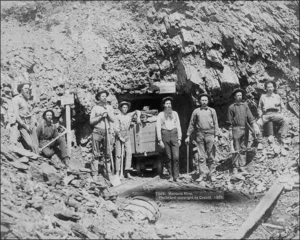 Martin Sweeny, Indian Agent, was born in Massachusetts in 1845, and decided to head out West at the age of 23. He ended up in Arizona shoeing horses on the Apache reservation. Here he learned the Apache language, and developed an appreciation for their lifestyle.
Martin Sweeny, Indian Agent, was born in Massachusetts in 1845, and decided to head out West at the age of 23. He ended up in Arizona shoeing horses on the Apache reservation. Here he learned the Apache language, and developed an appreciation for their lifestyle.  Martin Sweeny, Indian Agent, was born in Massachusetts in 1845, and decided to head out West at the age of 23. He ended up in Arizona shoeing horses on the Apache reservation. Here he learned the Apache language, and developed an appreciation for their lifestyle.
Martin Sweeny, Indian Agent, was born in Massachusetts in 1845, and decided to head out West at the age of 23. He ended up in Arizona shoeing horses on the Apache reservation. Here he learned the Apache language, and developed an appreciation for their lifestyle. 
 During the
During the  Cowboy’s Lament, A Life on the Open Range, Frank Maynard, Texas Tech University Press, www.ttuDress.org, $29.95, Cloth. Maps, Photos, Bibliography, Index. Foreword by David Stanley, professor emeritus of English, Westminster College, Salt Lake City.
Cowboy’s Lament, A Life on the Open Range, Frank Maynard, Texas Tech University Press, www.ttuDress.org, $29.95, Cloth. Maps, Photos, Bibliography, Index. Foreword by David Stanley, professor emeritus of English, Westminster College, Salt Lake City.

